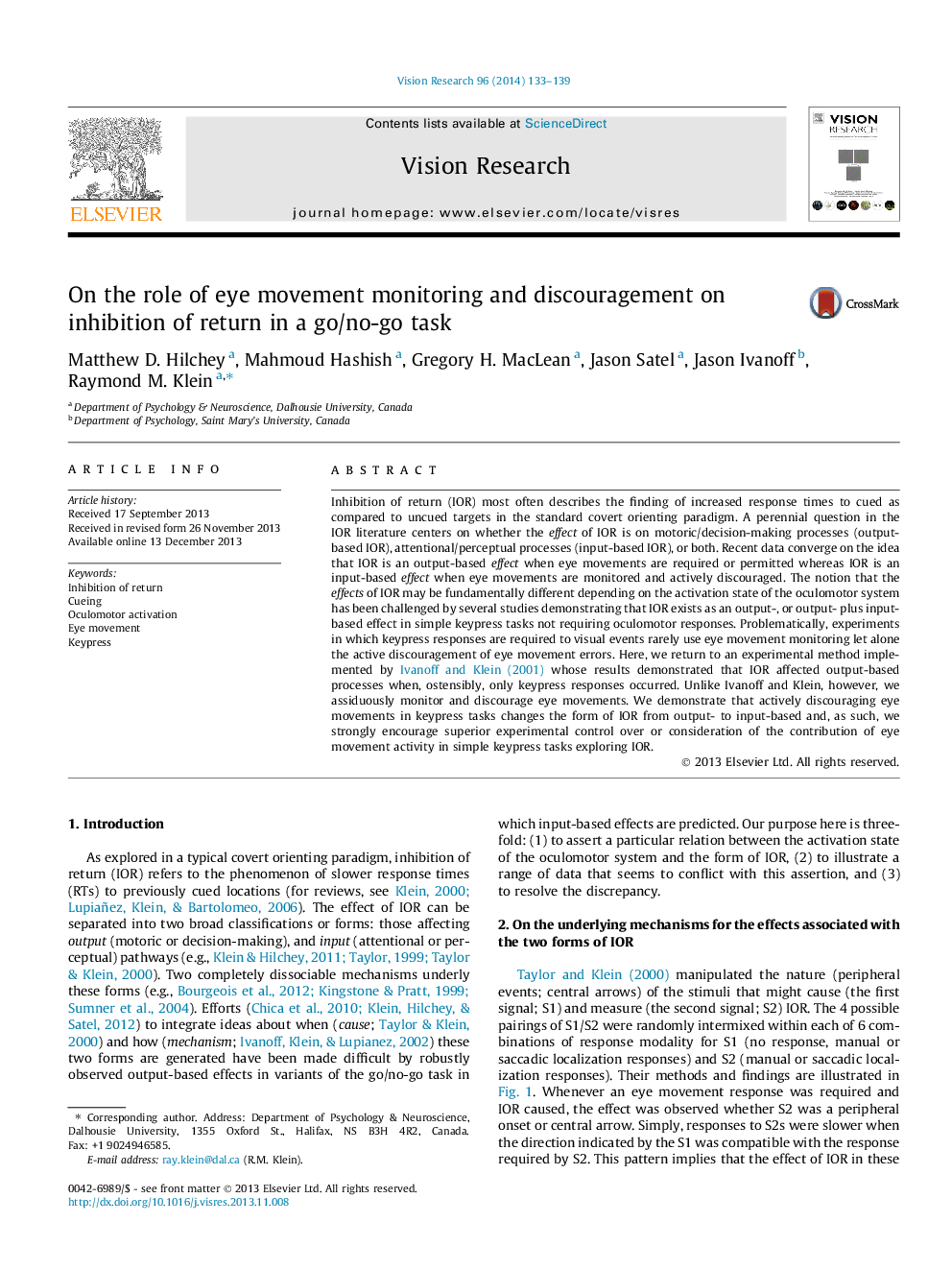| Article ID | Journal | Published Year | Pages | File Type |
|---|---|---|---|---|
| 6203483 | Vision Research | 2014 | 7 Pages |
â¢We review the go/no-go literature on IOR in “covert” orienting paradigms.â¢Most studies, which did not provide trial-by-trial feedback to discourage unwanted eye movements, find an output form of IOR that presents as a speed-accuracy tradeoff.â¢When eye movements are expressly discouraged we find a fundamentally different, input, form of IOR.â¢Research on IOR must consider the activation state of the oculomotor system.
Inhibition of return (IOR) most often describes the finding of increased response times to cued as compared to uncued targets in the standard covert orienting paradigm. A perennial question in the IOR literature centers on whether the effect of IOR is on motoric/decision-making processes (output-based IOR), attentional/perceptual processes (input-based IOR), or both. Recent data converge on the idea that IOR is an output-based effect when eye movements are required or permitted whereas IOR is an input-based effect when eye movements are monitored and actively discouraged. The notion that the effects of IOR may be fundamentally different depending on the activation state of the oculomotor system has been challenged by several studies demonstrating that IOR exists as an output-, or output- plus input-based effect in simple keypress tasks not requiring oculomotor responses. Problematically, experiments in which keypress responses are required to visual events rarely use eye movement monitoring let alone the active discouragement of eye movement errors. Here, we return to an experimental method implemented by Ivanoff and Klein (2001) whose results demonstrated that IOR affected output-based processes when, ostensibly, only keypress responses occurred. Unlike Ivanoff and Klein, however, we assiduously monitor and discourage eye movements. We demonstrate that actively discouraging eye movements in keypress tasks changes the form of IOR from output- to input-based and, as such, we strongly encourage superior experimental control over or consideration of the contribution of eye movement activity in simple keypress tasks exploring IOR.
